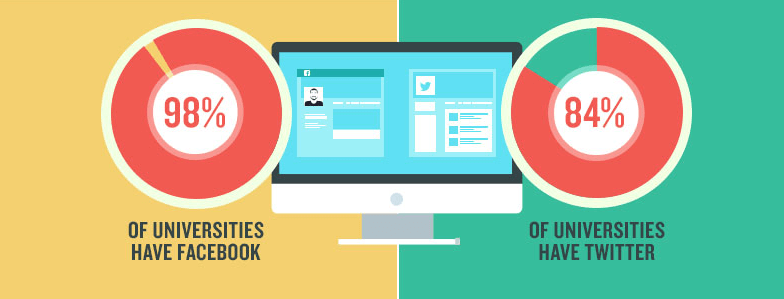The technological advancements are playing a huge role in how businesses shape and develop today. The vast amount of data available all over the web is simply unbelievably huge. This data greatly impact many industries. The sports industry and athletics also fall into the category of industries that are affected by the Big Data.
All the data available is a great resource that can benefit the industry in many ways. Web scraping sports data can be used to get a competitive advantage and beat the competition in many ways. The Big Data available today can help the sports industry, but it’s of no use if there’s no one who can analyze the data and give a meaningful feedback.
Data analysis in sports is boosting sales, revenue, fan engagement and even chances of victory. Thereby, the recent years had seen an increase in the demand for data analysis in the sports industry.
The best sports teams today have their own experts of data, who analyze information and create strategies based on the data. Data has a huge potential in the sports industry.
Web scraping can help the sports industry with data collection. It is gaining a popularity for many businesses and industries, and sports and athletics can greatly benefit from data crawling. The crawled data can offer so many benefits to coaches, scouts, marketers, and managers, and it would help sports teams gain a competitive advantage.
Data analysis is a new and innovative way to beat the competition and get ahead of all competitors. This blog post discusses how web scraping sports data is important in the sports industry and how it can help a sports team in many different ways.
Web Scraping Sports Data as a Guide to the Team’s Victory
The victory in any game is achieved by hard work, well-developed strategy and maybe a bit of luck. Or so we have always been thinking.
But what if there are other factors involved in the “luck” and victory of a team? What if you can use data to get your team to the top? All the buzz around using data as a guide for the team’s victory has started in 2003.
A bestseller book Moneyball by Michael Lewis changed the way people approached the sports industry. The 2003 book brought a revolution into how player performance is measured and assessed using an evidence-based approach.
In essence, Moneyball created a whole new sports science approach that helps sports scientists to evaluate how players and teams are performing.
The famous story of the Oakland Athletics that was popularized in Moneyball book displayed the power of Big Data.
The story showed how a team struggling to succeed used evidence-based recruitment tactics. Data helped A’s general manager Billy Beane to pick his players based on pure statistics and numbers rather than intuition and “gut” feeling. Beane’s use of sabermetrics and data-driven decision making brought huge success to A’s team.
The main aim of Beane’s analysis was to understand the secret to success in unfair and imperfect science of baseball player evaluation. Beane drafted and traded for players that fit his data-based theory. Eventually, the result was that Athletics were a team that drew far more walks than strikeouts. In his sabermetrics, Beane removed characteristics like height, weight, speed or body composition prototypes.
Basically, he disregarded those characteristics that were always the most resultful. His highly successful and efficient results revolutionized baseball’s modern era and even the professional sports as a whole.
Data Scraping Sports Data Helps Coaches Gain Competitive Advantage
Following Billy Beane’s example, many coaches and managers realized the privilege of using data for gaining an advantage. Nowadays, data-driven recruitment is getting popularity among many industries including sports. For years, the sporting world was identifying talents by gut feeling, hunches, and instinct. The Dublin-based startup, Profile 90, aims to take the guesswork out of talent identification in sports.
The company is introducing a multifaceted talent identification platform.
The co-founder, psychiatrist Dr Jag Basra, is using Big Data analysis to create this technology of talent identification. This innovation is, surely, revolutionizing the way talent is measured and spotted.
Coaches use training data on young athletes to gain insights into what makes top athletes succeed in the Olympics, and spot the factors that play the biggest role in success.
The data helps Olympic competitors learn more about the possible challenges they might face during training. For example, challenges like the clash between strength training and endurance training for rowers. Using data to get ahead of the competition is a long-term resultful way to get a competitive advantage.
That’s why many sports team managers and coaches are implementing data analysis for their team’s growth.
The modern sport world experts are starting using data-based recruitment at a high speed. However, data crawl can benefit coaches and managers in many other ways too. For example, web scraping sports data can help to get a better understanding and visualization of what’s happening now in the industry.
Marketers can use web scraping sports data as a tool to improve the marketing campaigns and targeting. Managers can use Big Data to create insightful visualizations into current trends. Visualizing a vast amount of data helps to better understand what’s happening in the industry, and thereby, create more effective strategies for the team.
The Rise of Data Analysts in Sports
It’s obvious now that the demand for sports data analysts is at its peak. Following major teams’ success with data-driven decisions, now most of the sports team managers are in a need of sports data scientist. In fact, today, almost all major professional sports teams have either a data analytics expert on staff or even a separate analytical department.
Many teams are now using SAS – statistical analysis system – to manage and understand the huge amount of data available. An NBA team, Orlando Magic, is using SAS Analytics and SAS Data Management. Orlando Magic is currently among the top revenue earners, while being in the 20th largest market, all thanks to SAS.
Data analysts are needed for all kinds of sports, be it a soccer, volleyball or basketball.
However, it should be mentioned that each sports type must have its own analysts. Most definitely, not all different types of analysts fit in for every sport. Each sport is unique in its own kind. Hence, the analysis performed for every sports type must vary in terms of methodology.

One rule that applies to all sports is that the more data is available, the better analysis will be performed. The biggest nightmare for data analysts is not to have enough data to work with. Web scraping sports data is an essential step for this industry. Web crawling and data scraping will make sure that your analysts are packed with enough data to perform an effective and resultful analysis.
Any sports team manager has to hire a professional data analyst, who will manage to find innovative ways of using data. Also, data analysts must be able to find the best-fitting methodology to make the most out of the raw data.
The Role of Crawling Data from Social Media
What is a bigger source of data if not social media?
With web scraping and data mining, you can get a lot of insights into the fan base. Social media is a great place to interact with fans and keep the relationship two-sided. Fans use the social media platform to search and find information about their favorite teams.
Sports teams take advantage of this. They use social media to leverage data about fans. Then, they use the information and the crawled data to attract and engage fans. Simple marketing techniques based on real data can help to boost the engagement and encourage fans to buy tickets and attend more games.
In fact, not only professional sports teams but universities too can take advantage of social media.
Sports in universities are very dynamic and a lot of sports games take place throughout the year. Obviously, the most engaged segment in university games is the segment of young adults. That’s why more and more schools are beginning to see the important role of social media data in driving engagement with their athletic programs.

In fact, as of now according to Ohio University, 84% of all universities have Twitter and use it to attract millennial students and fans. The trend has become so popular that even professional sports teams started to market ticket sales directly to millennials via social media.
By increasing fan engagement, your sales and revenue will boost too. The data on ticket sales and attendance from different seasons is very useful for analysts. They can determine the probable success each team had the prior season. Then, they compare other forms of data with these numbers to determine the biggest cause. It is their job to review the numbers and changes from previous seasons to find correlations or trends.
The information is then used by sports marketers and other related professionals to create better strategies and effective communication methods with the audience.
Web Scraping is the Solution for Getting Sports Data
Now that the role of Big Data in sports is clear, let’s set out how exactly that data can be found.
Web crawling and data scraping is the most effective solution for fulfilling all your sports data needs, especially when carried out by scraping services.
Let’s see why.
Currently, there are many companies that offer a service of data harvesting for specific data needs. The process of data crawl is very time consuming and is not an easy task to do. It will be much more productive to outsource the work to a third party company, which will scrape sports scores and other relevant data.
There are many advantages to working with a web scraping service provider.
For example, the professionals working on DataHen team will deliver you the most relevant and efficient data in your preferred structure and format. It is important to have available data from all over the web. Only this way data analysts will be able to make most out of their analysis.
The future of data in sports is looking bright, so let us help you with the exciting journey into the world of sports data.



